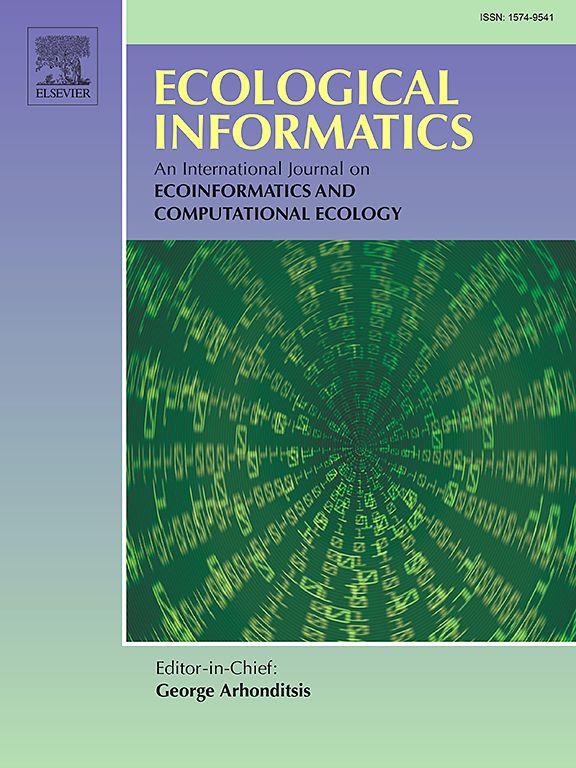Tracking freshwater depletion in Northern Australia: A multi-satellite approach
IF 5.8
2区 环境科学与生态学
Q1 ECOLOGY
引用次数: 0
Abstract
Accurate freshwater accounting is critical for effective local water planning and governance, but this is limited by availability of in-situ data. In Australia’s Northern Territory, significant climatic and hydrologic knowledge gaps have brought into question the sustainability of groundwater regulation amidst expansion of agricultural and mining activities. We demonstrate how multi-satellite remote sensing data can enhance understanding of human and drought impacts on changes in freshwater storage to underpin management strategies. By integrating historical Landsat data and in-situ groundwater levels, river discharge, rainfall, and climate data (1986–2022) with satellite gravity observations and output from a hydrological model (2002–2022), we develop a framework to document changes in surface and sub-surface water storage systems over the Cambrian Limestone Aquifer (CLA). We assess the response of these systems to hydrological drought, quantify water deficits and assess how much water may potentially be missing due to drought or extraction. Our satellite analyses show that changes in freshwater storage (or terrestrial water storage-TWS) in the CLA started to significantly decline after 2014. The CLA continued to experience variations in TWS deficits in the last decade (2014–2023) with average time to recovery increasing considerably from less than 5 months in 2014 to more than 15 months in 2021 when water storage deficits reached . The CLA appears to be getting drier, evidenced by recent (2011–2022) and significant depletion in groundwater storage (−3.88 ± 0.29 km3/yr) and TWS declines (ranging from 6.28 ± 0.75 km3/yr to 8.20 ± 0.75 km3/yr), coinciding with large losses in aerial extent of open surface water features. While acknowledging that drought-affected areas and occurrences during the 2011–2022 period were significantly less than those experienced between 2003 and 2010, it is noteworthy that the recent drying coincided with the commencement of licensed groundwater extraction in the CLA. Building on these findings, we highlight the unique capabilities and benefits of combining satellite gravity and optical data to enhance our understanding of hydrological processes, while also advancing water governance and management responses to droughts and pressures from water extraction.
跟踪澳大利亚北部的淡水枯竭:多卫星方法
准确的淡水核算对于有效的地方水资源规划和治理至关重要,但这受到现场数据可用性的限制。在澳大利亚北部地区,随着农业和采矿活动的扩大,显著的气候和水文知识缺口使地下水管理的可持续性受到质疑。我们展示了多卫星遥感数据如何能够增强对人类和干旱对淡水储量变化的影响的理解,从而支持管理战略。通过整合历史Landsat数据、原位地下水位、河流流量、降雨和气候数据(1986-2022)以及卫星重力观测和水文模型输出(2002-2022),我们开发了一个框架来记录寒武纪石灰岩含水层(CLA)地表和地下蓄水系统的变化。我们评估了这些系统对水文干旱的反应,量化了水分短缺,并评估了由于干旱或开采可能导致的水量损失。我们的卫星分析显示,CLA淡水储量(或陆地水储量- tws)的变化在2014年之后开始显著下降。CLA在过去十年(2014 - 2023年)持续经历TWS赤字的变化,平均恢复时间从2014年的不到5个月大幅增加到2021年的15个月以上,储水赤字达到150km3。最近(2011-2022年)地下水储量显著减少(- 3.88±0.29 km3/年),TWS下降(从6.28±0.75 km3/年到8.20±0.75 km3/年),表明CLA似乎正在变得更加干燥,这与开放地表水特征的空中范围的巨大损失相一致。虽然承认2011-2022年期间受干旱影响的地区和发生次数明显少于2003 - 2010年期间,但值得注意的是,最近的干旱与CLA开始许可的地下水开采同时发生。在这些发现的基础上,我们强调了将卫星重力和光学数据相结合的独特能力和好处,以增强我们对水文过程的理解,同时也推进了水治理和管理,以应对干旱和取水压力。
本文章由计算机程序翻译,如有差异,请以英文原文为准。
求助全文
约1分钟内获得全文
求助全文
来源期刊

Ecological Informatics
环境科学-生态学
CiteScore
8.30
自引率
11.80%
发文量
346
审稿时长
46 days
期刊介绍:
The journal Ecological Informatics is devoted to the publication of high quality, peer-reviewed articles on all aspects of computational ecology, data science and biogeography. The scope of the journal takes into account the data-intensive nature of ecology, the growing capacity of information technology to access, harness and leverage complex data as well as the critical need for informing sustainable management in view of global environmental and climate change.
The nature of the journal is interdisciplinary at the crossover between ecology and informatics. It focuses on novel concepts and techniques for image- and genome-based monitoring and interpretation, sensor- and multimedia-based data acquisition, internet-based data archiving and sharing, data assimilation, modelling and prediction of ecological data.
 求助内容:
求助内容: 应助结果提醒方式:
应助结果提醒方式:


